The Vineyards of Napa and Bordeaux: Exploring Distinctive Wine Regions
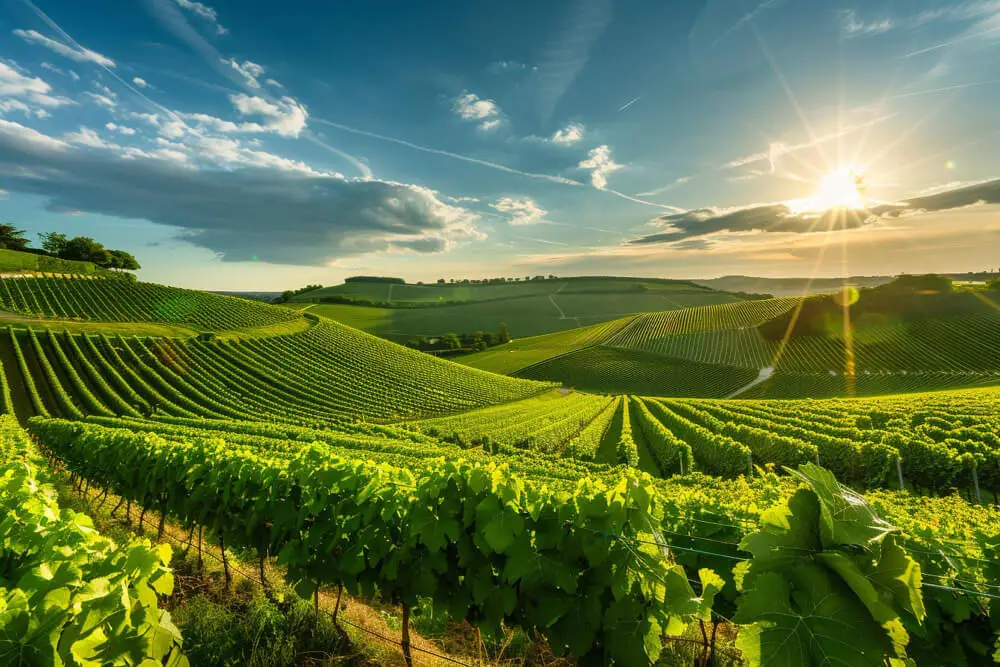
Updated On: March 29, 2024 by Yasmin Elwan
Exploring the vineyards of Napa and Bordeaux is to traverse the realms of two iconic terroirs. We often celebrate the distinctive characteristics of wines, which are deeply influenced by their place of origin. Terroir is a term that encapsulates all the environmental factors that affect a crop’s phenotype, including unique environment contexts, farming practices and a crop’s specific growth habitat.
Collectively, these contextual characteristics are said to have a character; terroir refers to this character. Napa Valley and Bordeaux are two regions that command respect in the wine world, both laying claim to a deep heritage of winemaking and a commitment to quality that sets them apart.
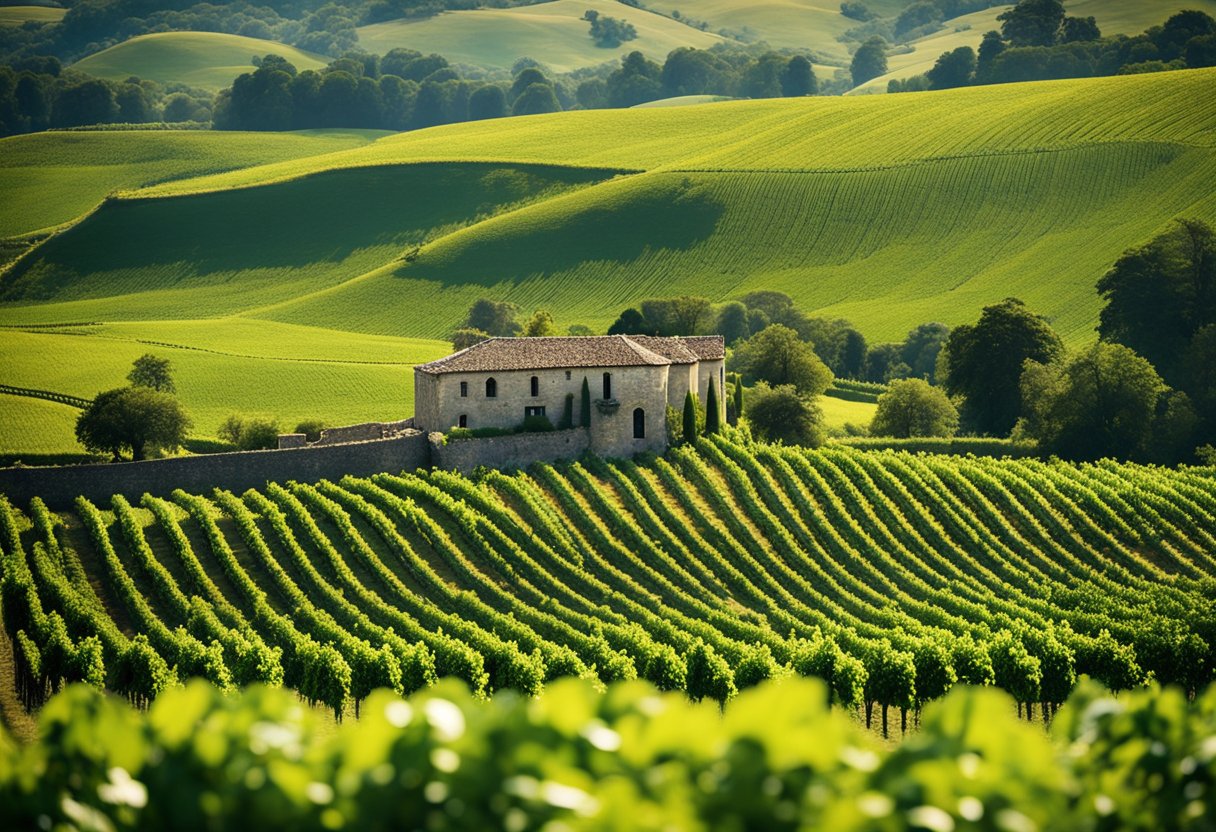
Both regions offer a rich tapestry of soil types and microclimates but with distinct differences. Napa boasts a remarkable range of soil types – half of the world’s soil orders are found here. Bordeaux, with its historical vineyards split between the Left Bank and the Right Bank, has its own complexity, where variations in soil and landscape express themselves through the wines. These variations in terroir influence not only the sensory profiles but also the viticultural practices that define the wine-growing traditions of each area.
The Concept of Terroir
Understanding terroir is to appreciate the symphony of natural factors that give the wine its distinctive character. Terroir is a French term deeply rooted in viticulture, encapsulating the environmental elements that influence a vineyard’s produce.
Climate and temperature play pivotal roles; they can vary dramatically between regions and even within a single vineyard. The climate affects the rate of grape maturation and the balance of sugar and acids in the fruit.
The soil composition—a mosaic of minerals, organic matter, and water retention properties—also contributes significantly. Each type of soil, be it clay, limestone, or gravel, imparts unique qualities to the wine.
Water availability, from rainfall to subterranean sources, can determine the vigour and health of the vines. Too much or too little can have profound effects on the outcome of the harvest.
Here is an outline of key terroir factors:
- Climate: Sunlight, temperature, wind
- Soil: Composition, drainage, pH
- Topography: Altitude, aspect, slope
- Water: Irrigation, rainfall patterns
Through meticulous viticulture, we can interpret and enhance these conditions. Prudent winegrowers adjust their practices to align with the rhythm of their lands, nurturing each vine to express the essence of its terroir.
In essence, terroir is the heart of a vineyard’s identity, a concept that underscores the intimate connection between nature and the nuanced craft of winemaking.
History and Tradition
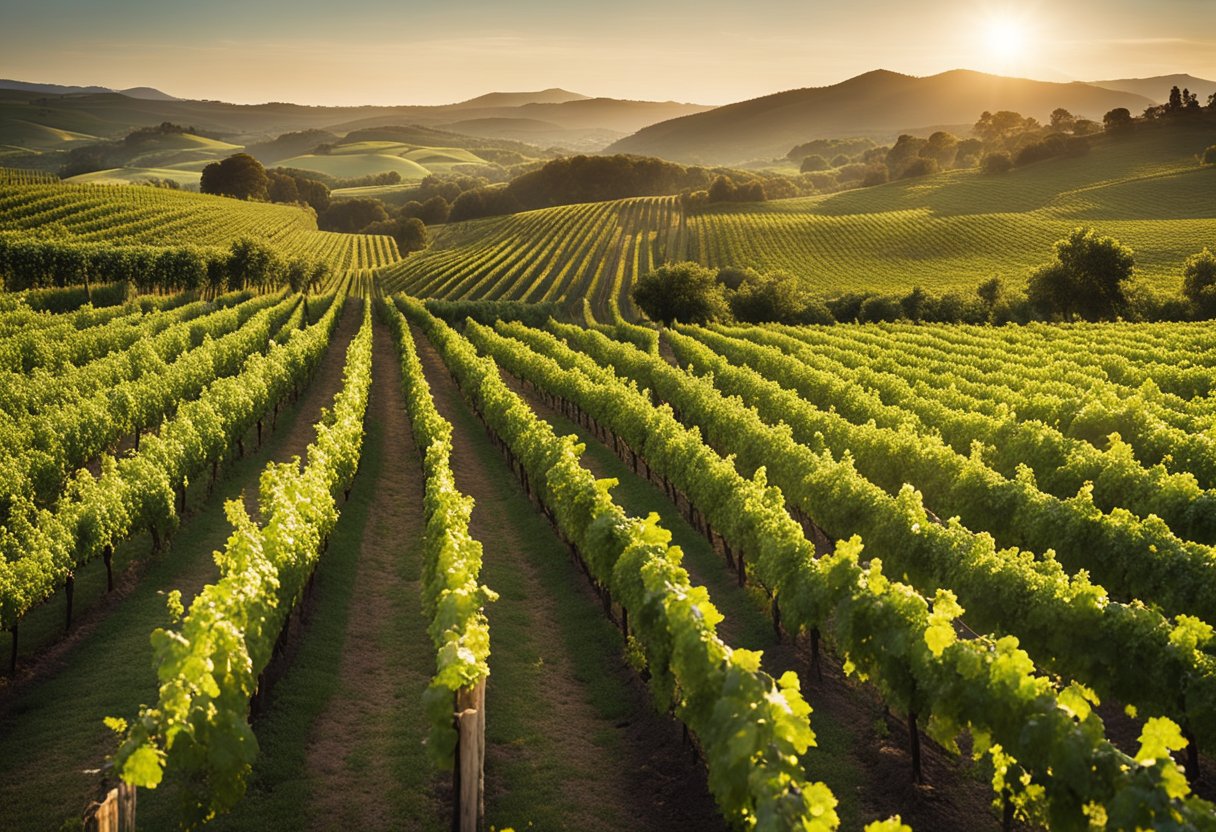
In this section, we take a closer look at the storied past and deep-rooted traditions that have shaped two of the world’s most esteemed wine regions: Napa Valley and Bordeaux. We explore their origins, the development of their vineyards, and how history has influenced the wines we savour today.
Napa Valley Wine History
The vineyard-laden valleys of Napa have a rich history dating back to the 19th century. The establishment of the wine industry in Napa Valley began in the 1830s, with commercial production starting in the 1860s. The region’s first winery, Schramsberg Vineyards, was established in the 1860s, eventually leading to the creation of the acclaimed Beringer in 1875.
Yet it wasn’t just about early beginnings; the late 20th century brought renewed international attention. The landmark 1976 Judgment of Paris saw Napa wines outranking French counterparts, cementing the valley’s reputation. In 1981, Napa was designated the first American Viticultural Area (AVA) in California, recognising its unique climate and geography ideal for viticulture.
Bordeaux Wine Heritage
Across the Atlantic, Bordeaux’s wine heritage spans nearly two millennia, with origins tracing back to when the Romans planted the first vineyards. The region’s strategic port city status in the Middle Ages further developed its reputation in the wine trade, which is pivotal for the Bordeaux we recognise today. Bordeaux wines became a benchmark of quality following the 1855 Exposition Universelle de Paris, where wines were classified, and châteaux such as Lafite, Latour, and Margaux were praised. This classification system still influences the prestige and trade of Bordeaux wines, underscoring the tradition held in each bottle.
Each vineyard and every bottle from Napa to Bordeaux tell a story of dedication, craft, and history. These narratives of soil and toil remind us that wine is more than just a beverage; it’s the embodiment of heritage and the land itself.
Winemaking Techniques in the Vineyards of Napa and Bordeaux
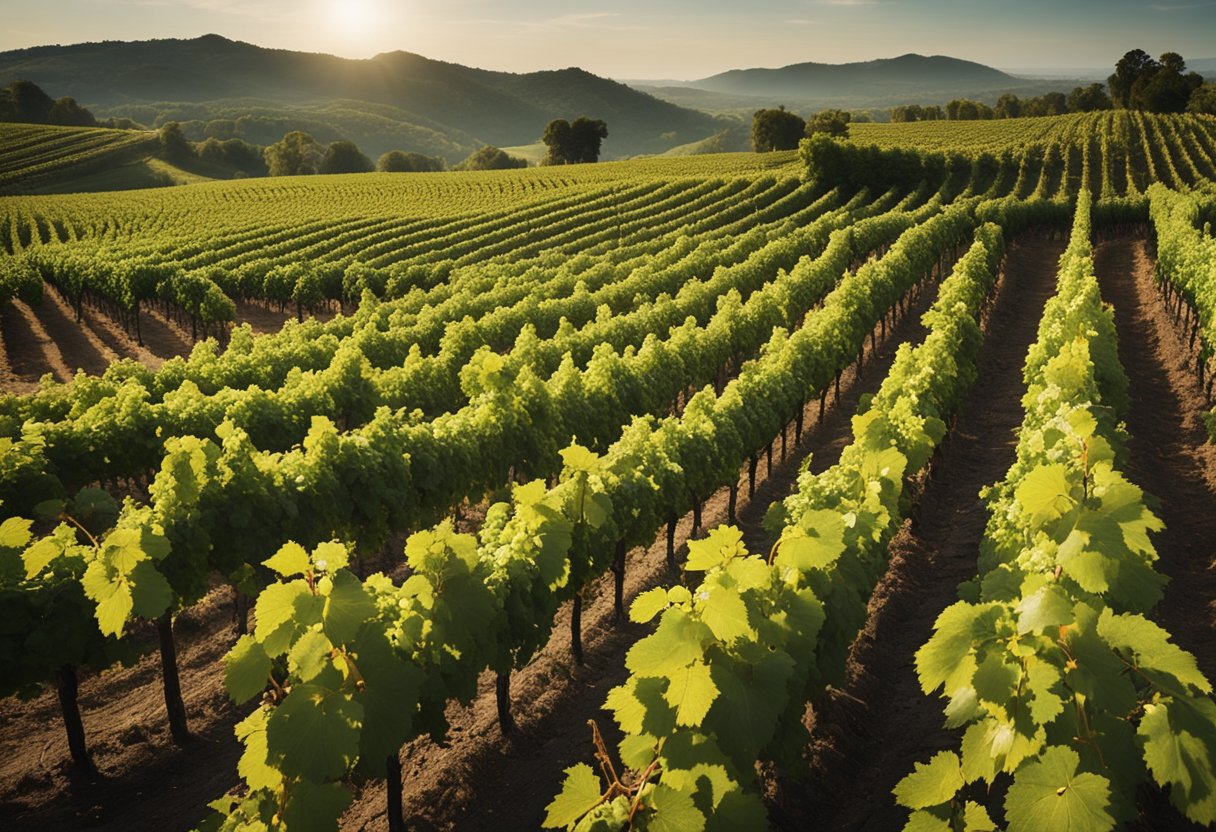
Winemaking in Napa and Bordeaux utilises distinct techniques that reflect their unique terroirs and heritage. These regions are renowned for their exceptional Cabernet Sauvignon and Merlot grapes, which form the backbone of their world-class wines. Our aim is to explore the specific vinification methods that distinguish these two celebrated viticultural areas.
Napa Valley Innovations
In Napa Valley, winemakers have embraced pioneering approaches to enhance the quality of their wines. Our winemakers often employ state-of-the-art technology to monitor and control fermentation processes. This includes the use of stainless steel fermenters, which allow for precise temperature regulation, and oak barrels, which impart depth and complexity to the wines.
Napa Valley has been at the forefront of adopting techniques such as night harvesting, where grapes are picked in cooler temperatures to ensure freshness, and micro-oxygenation, a process that introduces oxygen to the wine, softening tannins and improving the mouthfeel. Cabernet Sauvignon benefits from these innovative practices, exhibiting the full expression of ripe fruit flavours and velvety tannins.
Bordeaux Vinification Methods
Moving on to Bordeaux, the vinification methods tend to honour tradition, focusing on time-tested techniques that have been refined over centuries. Here, winemakers carefully blend grapes from different vineyards, creating nuanced wines that are greater than the sum of their parts. Bordeaux’s Left Bank is renowned for its gravel-based soils, enriching their Cabernet Sauvignon, which dominates the blend, with structure and ageing potential.
However, the Right Bank’s clay and limestone favour Merlot, resulting in wines with plush textures and approachable tannins. Both sides painstakingly manage maceration and extraction to achieve a balance between the wine’s fruit character and tannic backbone. Barrel ageing in French oak is a hallmark of Bordeaux vinification, lending subtle notes of spice and vanilla to the wines.
Geography and Climate Influence
We recognise that vineyards are inherently tied to their geographical placement, and it’s this very soil and climate that imprint unique characteristics upon their wines. Napa Valley and Bordeaux are no different, perfectly illustrating the profound impact of microclimates and regional climate conditions on viticulture.
Napa Valley Microclimates
Our travels through Napa Valley reveal a vast array of microclimates, each lending a hand in producing distinct and complex wines. The valley spans only 30 miles but contains a surprising diversity due to variations in elevation, exposure, and the cooling effect of fog from the nearby San Pablo Bay. Notably, the southern regions experience more cooling fog and breeze, perfect for growing Chardonnay and Pinot Noir, whilst the warmer northern areas are renowned for robust Cabernet Sauvignon. Discover the terroir of Napa Valley through its vineyards to grasp how these microclimates influence viticulture, from the valley floor up to the sun-drenched mountain slopes.
Bordeaux Climate Conditions
Bordeaux, on the other hand, enjoys a maritime climate with moderate winters and warm summers. Our understanding is enriched by insights into the region’s climate, where the Atlantic Ocean and its currents are pivotal, bringing in the necessary moisture and creating a blanket that helps to prevent severe winter freezes.
Bordeaux vineyards thrive here, with Merlot preferring the cooler, clay soils of the right bank, while the left bank’s gravelly soils suit Cabernet Sauvignon, bolstered by the warm summers and cool nights that preserve acidity and amass flavour complexity. How climate change is tweaking the taste of wine is particularly poignant in Bordeaux, where rising temperatures are subtly altering the traditional profiles of its wines.
Soil Types and Composition
Before we delve into the distinct terroirs of Napa and Bordeaux, it’s vital to understand the pivotal role of soil composition. These regions are renowned for their unique soil types, which are critical for vine health, drainage, and, ultimately, the flavour profile of their wines.
Napa Valley Soils
Napa Valley’s soil variety is astounding. Geologically diverse, the region’s terrain includes a vast array of soil types, primarily due to ancient volcanic activity and sedimentary deposits from over 150 million years ago. This results in a patchwork of soils ranging from rocky, free-draining volcanic soil to fertile clay.
- Volcanic Soils: Typically found in the mountains, these soils are rich in minerals and have excellent drainage, leading to more stressed vines that produce highly concentrated grapes.
- Clay Soils: Found in the valley floors, the heavier clay soils have a higher water retention ability, which can be advantageous during dry periods.
The vineyards of Napa are known to exhibit substantial diversity in the soil composition from North to South, which in turn affects the characteristics of the wine produced—from robust and full-bodied to subtle and nuanced.
Bordeaux Soil Diversity
Bordeaux’s soils are as diverse as its wines. The region’s soil composition includes a significant amount of clay, sand, and gravel, each contributing differently to vine growth and wine profiles.
- Gravel Soils: Predominantly found in the Left Bank of Bordeaux, gravelly soils retain heat well, promoting a longer growing season. They offer good drainage, which forces vines to grow deep roots.
- Clay Soils: In areas such as Saint-Émilion and Pomerol, clay soils dominate. These cool soils are moisture-retentive and particularly suited to growing Merlot grapes, giving the wine its lush, fruity characteristics.
- Sand Soils: Sandy soils, which are less fertile, tend to produce lighter, more aromatic wines because they have excellent drainage yet low nutrient content.
Understanding the complex soil types and their effect on viticulture is essential to appreciating the soil, terroir, and climate of Bordeaux. Each variety plays an integral part in creating the distinct, world-acclaimed wines for which Bordeaux is known.
Grape Varieties and Characteristics
Napa Valley and Bordeaux are two regions synonymous with high-quality wines, each with distinct grape varieties that contribute to their unique terroirs.
Napa Valley Grape Varietals
In Napa Valley, winemakers pride themselves on a rich palette of grape varietals, but one stands out as particularly noteworthy: Cabernet Sauvignon. This grape is renowned for its bold flavour and ability to produce wines with deep berry notes and firm tannins; characteristics that make Napa Valley wines so desirable. Aged in oak, these wines develop a complex array of aromas, from vanilla to spice, enhancing their status among wine connoisseurs. Another beloved varietal from this region is Zinfandel, known for its jammy character with spice and black pepper notes, showcasing the versatility and historic roots of winemaking in California. For more on the varieties found in Napa, visit Napa Valley Grape Varieties.
Signature Bordeaux Grapes
Across the ocean in Bordeaux, the story of grape varietals is marked by a different line-up. Merlot reigns supreme here, covering the lion’s share of the vineyards. It’s the backbone of the smooth, fruity wines that Bordeaux is famous for, often blended with its counterparts to create balanced and elegant wines. Cabernet Sauvignon also plays a critical role here, presenting another face of its diversity through the Bordeaux lens—bringing structure and longevity to the blends.
Likewise, Sauvignon Blanc is instrumental in Bordeaux’s white wines, providing crispness and a zesty acidity that underpins the appellation’s refreshing whites. A comprehensive breakdown of Bordeaux grape varieties can be explored by following Grape varieties | Official website Bordeaux.com.
Each varietal expresses the essence of its terroir, from the rich, complex soil to the unique climate that nourishes the grapevines. Both Napa and Bordeaux continue to foster their traditions of grape growing while refining the characteristics that contribute to their world-renowned reputations.
Viticultural Practices
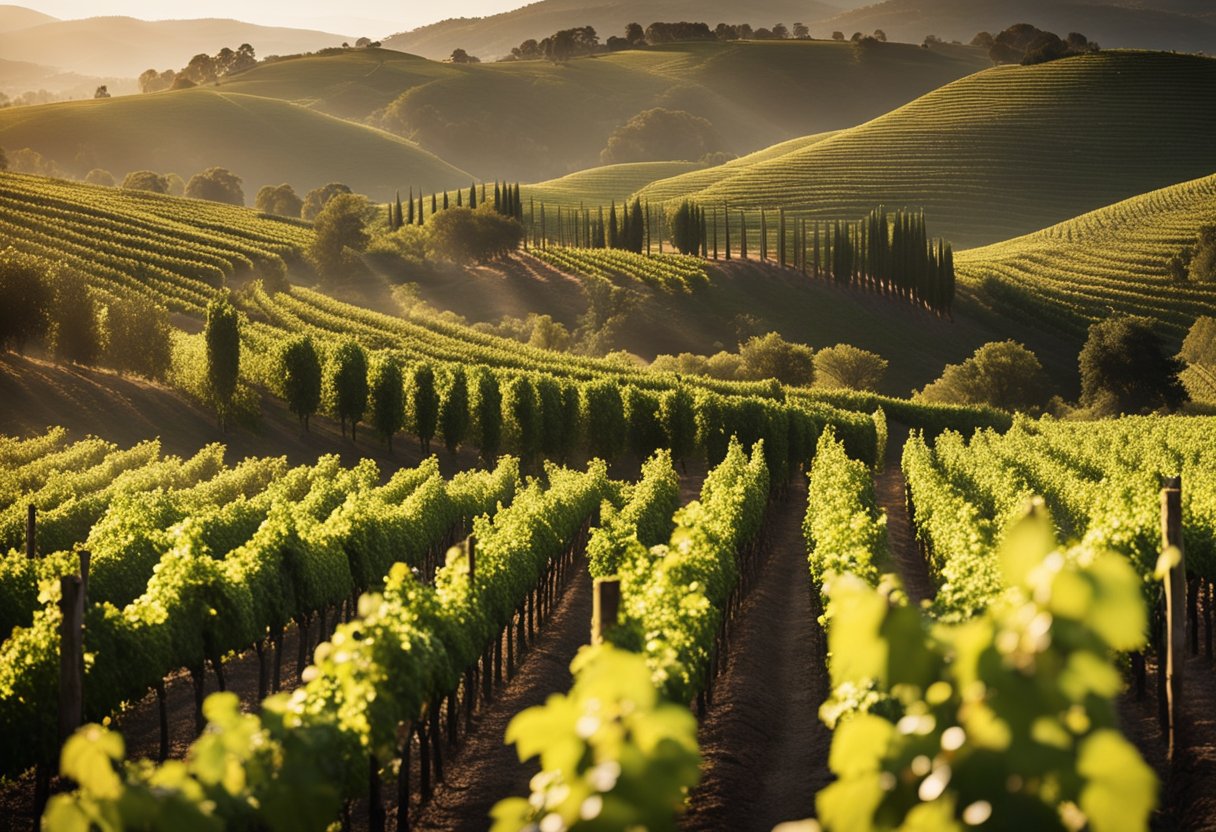
In our discussion of vineyard management, we focus on the specifics of viticultural practices between two renowned regions: Napa Valley and Bordeaux. These practices play a pivotal role in producing quality grapes that reflect the unique characteristics of each terroir.
Napa Valley Viticulture
Napa Valley’s viticultural practices are marked by a meticulous approach to achieving optimal ripeness and controlled yields. The region’s dry and warm climate allows for precise irrigation management, key to producing concentrated and ripe grapes. Vintners often employ advanced trellising systems to maximise sun exposure and air circulation, which is vital for the health of the vine and the quality of the fruit. The popular use of organic methods has been increasing in the area as vintners commit to sustainable farming to preserve their land.
- Pruning: Critical for controlling vine growth and fruit concentration.
- Irrigation: Managed carefully due to Napa’s hot climate.
- Trellising: Ensures efficient sun exposure and fruit development.
Bordeaux Vineyard Management
The vineyards of Bordeaux uphold a longstanding tradition of vineyard management informed by centuries of experience. Pruning is a fundamental practice here, with the Guyot system being the most prevalent, ensuring adequate sunlight and airflow for the grapes. Bordeaux’s maritime climate necessitates careful canopy management to prevent excess moisture, which can lead to rot and fungal diseases. The pursuit of balanced yields is paramount, as it influences not only the ripeness but also the complexity and ageing potential of the wine.
- Canopy Management: To manage sunlight and reduce disease risks.
- Sustainable Practices: Increasingly adopted for long-term vine health.
- Yield Balance: Affecting the quality and longevity of wine.
Wine Profiles and Tasting Notes
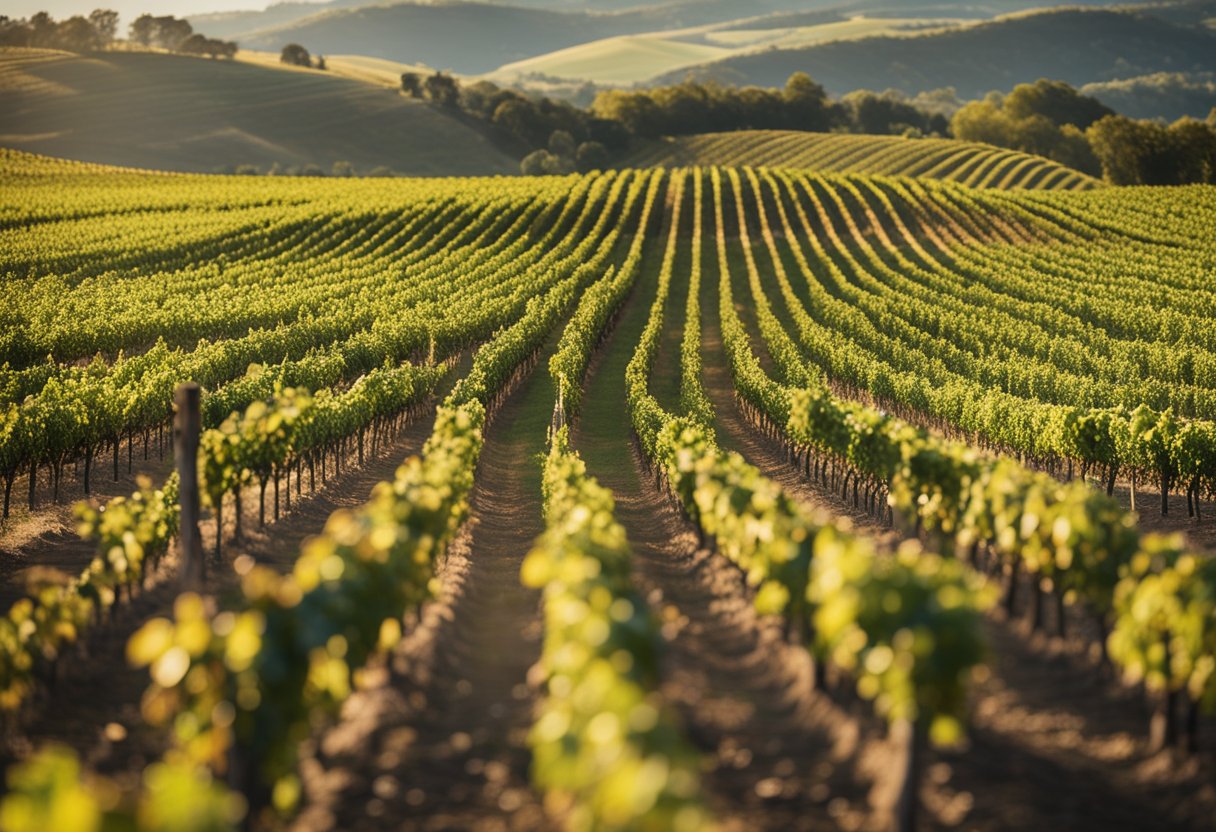
Exploring the unique characteristics of wines from Napa Valley and Bordeaux offers an intriguing glimpse into the art of viticulture and the influence of terroir.
Tasting Napa Valley Wines
Chardonnay: A staple of Napa Valley, our Chardonnays typically exude a full-bodied richness with pronounced vanilla and oak flavours due to the fermentation process. It’s common to experience a delightful fruitiness paired with refreshing acidity.
- Flavours: Expect a spectrum ranging from apple and pear to more tropical notes like pineapple.
- Acidity: Usually high, lending a crisp finish.
Cabernet Sauvignon: Famed for their bold character, our Napa Cabernet Sauvignons exhibit a complex array of dark fruit flavours with a cloak of tannins that soften beautifully with age.
- Flavours: Dark cherry, blackberry, and plum, often infused with hints of chocolate and coffee.
- Minerality: Subtle undertones that can include graphite or wet stone, adding depth.
Merlot: These velvety reds are known for their approachable tannin structure and plummy palate, often complemented by notes of bay leaf and chocolate.
- Flavours: Predominantly dark fruits like black cherry.
- Body: Medium to full, with a smooth texture.
Sampling Bordeaux Wines
Red Bordeaux Blends: Our Bordeaux reds are primarily composed of Merlot and Cabernet Sauvignon, creating wines that balance the lush fruit of the former with the structural backbone of the latter.
- Flavours: Expect a tapestry of blackcurrant, tobacco, and sometimes truffle.
- Tannins: Robust, offering the wines great ageing potential.
White Bordeaux: Often underappreciated, white Bordeaux wines typically blend Sauvignon Blanc and Semillon, resulting in a zesty acidity balanced by a creamy fullness.
- Acidity: High, giving the wine freshness and vitality.
- Flavours: Citrus and herbaceous notes from the Sauvignon Blanc married with the textural weight of Semillon.
Sweet Bordeaux: A divine after-dinner treat, with the noble rot-infected grapes contributing to the concentrated and complex flavour profile.
- Flavours: Honey, apricot, and almond nuances are commonplace.
- Acidity: A vital counterpart to the sweetness for balance.
Influence of the Wine Industry
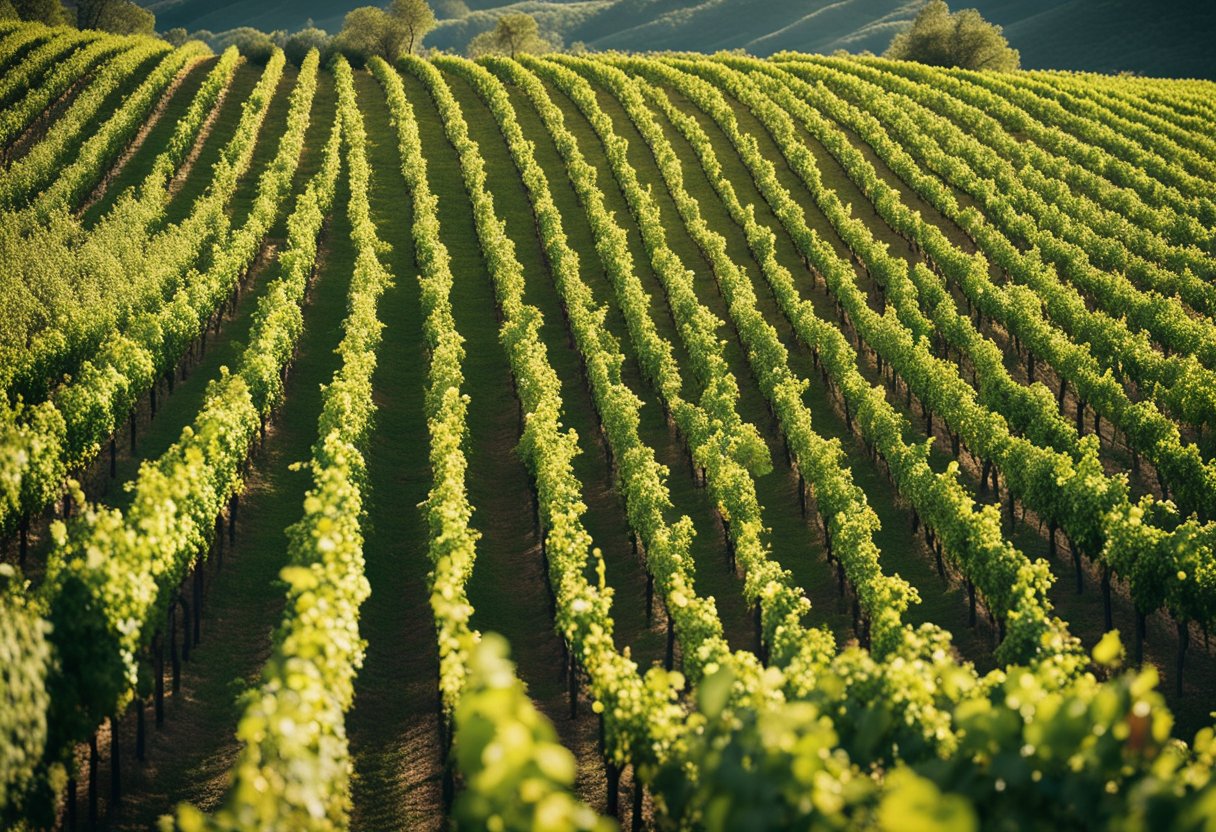
We recognise that the wine industry is not only a testament to the agricultural prowess of a region but also a significant contributor to economic vitality and cultural identity. As we explore this influence, our focus zeroes in on two distinct and prestigious wine regions: Napa Valley and Bordeaux.
Napa Valley’s Global Influence
In Napa Valley, a remarkable synergy of climate, geography, and human expertise has given rise to wineries whose produce has consistently earned international acclaim. As an American Viticultural Area (AVA), Napa Valley’s vintners have become pivotal in setting standards for quality and innovation in the wine community.
With over 25 French-owned wineries and numerous others shaped by French expertise, the valley illustrates a powerful fusion of American terroir and French winemaking finesse. This cross-pollination has expanded Napa Valley’s influence on the international market, placing it firmly on the world stage as a leader in fine wine.
Bordeaux’s Wine Economy
Meanwhile, Bordeaux stands as a historical benchmark within the wine economy. Its classification system, stemming from the 1855 Exposition Universelle de Paris, remains a guiding framework for wine quality and heritage. Bordeaux’s economic footprint is vast, with over 7,000 wine-producing châteaux and a significant portion of the city’s income derived from the wine trade. The region’s emphasis on controlled appellations and close-knit community of vintners ensures an unwavering commitment to excellence – a commitment that echoes through its prominence in the global wine economy.
Wine Tourism and Experiences
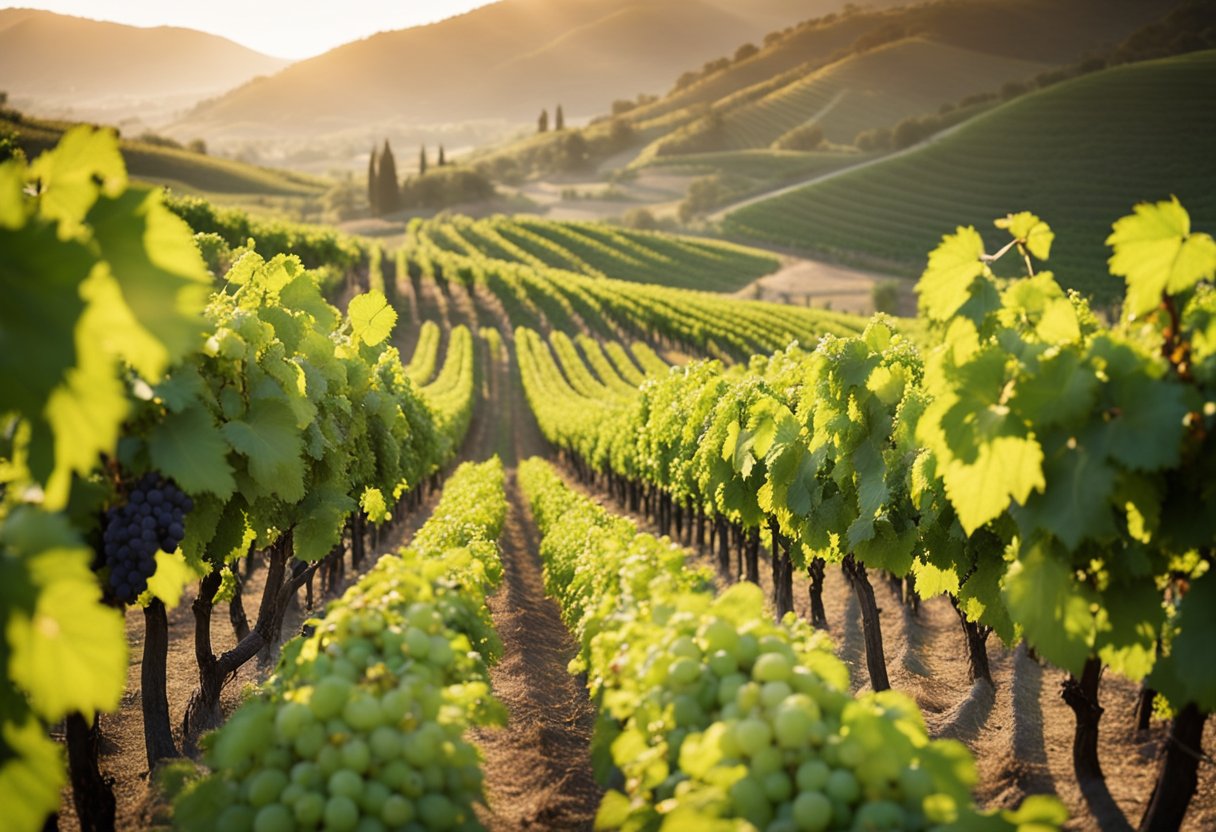
Wine enthusiasts often seek immersive experiences that blend the enjoyment of wine with learning about its origins and production. Napa Valley and Bordeaux, both prestigious wine regions, cater to these desires with their unique offerings in wine tourism.
Visiting Napa Wineries
Napa Valley is renowned for its world-class wineries and extensive range of wine tourism activities. Wine lovers can partake in the Bottle Blending Day Camp, an engaging experience where participants create their own custom blend at Judd’s Hill Winery. Tasting rooms abound, offering a variety of sensory experiences from classic tastings to food and wine pairings. Those interested in a more comprehensive overview can find guided tours that articulate the nuances of Napa’s terroir and viticulture. For instance, companies like Beau Wine Tours provide detailed insights into the grape varieties and terroir, further enhancing the visitor’s understanding and appreciation of this world-renowned wine region.
Bordeaux Wine Tours
Bordeaux, a name synonymous with fine wine, offers an array of tours and experiences aimed at showcasing its storied wine heritage. Visitors often indulge in guided tours across various châteaux, each presenting a chance to discover the intricacies of Bordeaux winemaking. Seminars and workshops are also prevalent, offering deeper educational insights. Renowned for their elegance, several Bordeaux estates have integrated upscale restaurants within their premises, allowing for a sublime pairing of regional cuisine and exceptional wines. The collective experience of touring, tasting, and dining at a Bordeaux winery encapsulates the essence of what makes this region a cornerstone of viticultural excellence.
Frequently Asked Questions
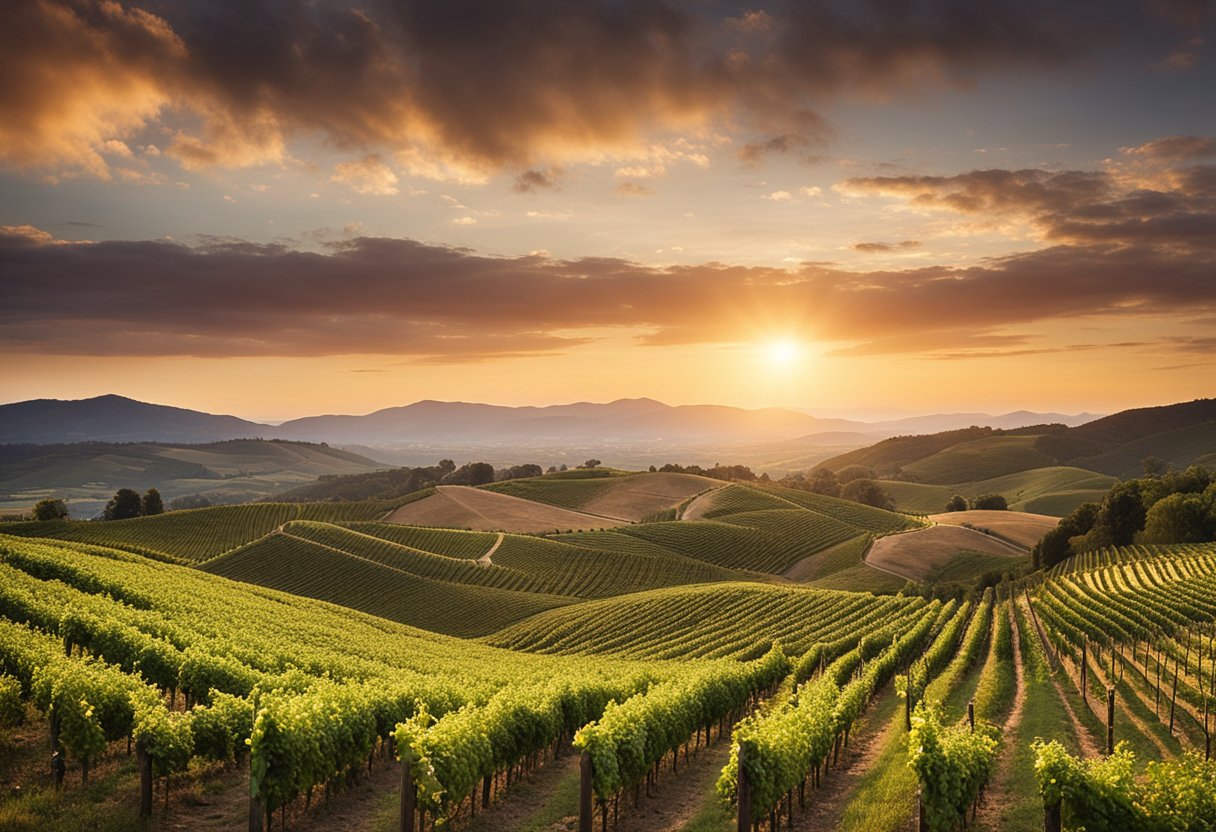
As we explore the esteemed vineyards of Napa and Bordeaux, a number of inquiries often arise regarding their terroirs, the influence of terroir on wine characteristics, historical figures of winemaking, renowned viticultural practices, and the impact of climate and soil.
What distinguishes the terroirs of Bordeaux and Napa Valley vineyards?
The terroirs of Bordeaux and Napa Valley are renowned for their distinct characteristics. Bordeaux’s terroir offers a moderate maritime climate with a range of soil types from gravel to limestone, known for producing nuanced and complex wine profiles. In contrast, the terroirs of Napa Valley are much more varied, with over 140 soil types and microclimates affecting each vineyard differently, giving a richer and more robust flavour to their wines.
How does terroir influence the characteristics of a vineyard’s wine?
Terroir’s influence on a vineyard’s wine is profound, as it encompasses the soil composition, topography, climate, and local vegetation, all of which interact to impart unique flavours and aromas to the wine. The expression of terroir is evident in the mineral notes from certain soil types, the balance of acidity and sweetness shaped by climate, and the structure and complexity developed through the geographic landscape.
Who is considered to be the founding figure of the Napa Valley wine region?
The founding figure of the Napa Valley wine region is often credited to George Calvert Yount. He was the first to plant vineyards in what is now the Napa Valley, laying the foundation for the region’s future as a powerhouse in wine production.
What are the contributing factors to Napa Valley’s wine prominence?
Napa Valley’s wine prominence can be attributed to its innovative wine-making techniques, its diverse and rich terroir, and the relentless pursuit of excellence by its winemakers. The region’s reputation was solidified when Napa wines outperformed Bordeaux in a blind tasting, which marked its status as a world-class wine-producing area.
What viticultural practices define Bordeaux’s approach to winemaking?
Bordeaux’s approach to winemaking is defined by traditional viticultural practices, which include precise grape selection, blending of grape varieties to achieve the signature Bordeaux style, and maturation in oak barrels to develop depth and character in the wine.
In what ways do climate and soil affect the wines produced in Bordeaux and Napa Valley?
The climate and soil greatly affect the wines of Bordeaux and Napa Valley. Bordeaux’s maritime climate and diverse soils contribute to the complexity and finesse of its wines, often resulting in elegant reds with ageing potential. Napa Valley’s varied microclimates and soils produce wines that are typically richer and more fruit-forward, with bold flavours that appeal to a global palate.






